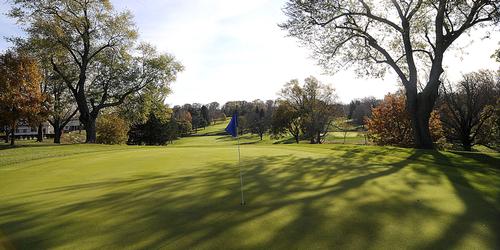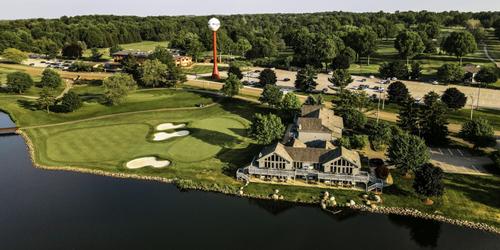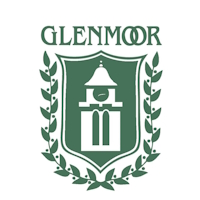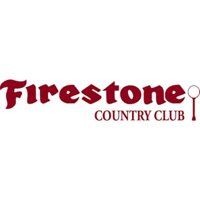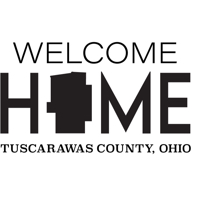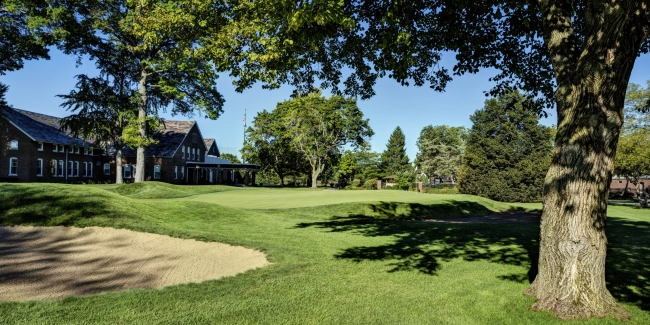
INVERNESS CLUB
GOLF'S HISTORIC NATIONAL TREASURE
By Mike May
When you think about golf courses in Ohio, the destinations that immediately come to mind are Muirfield Village in Dublin; the Canterbury Club in Cleveland; Scioto Country Club in Upper Arlington (just outside Columbus); and the Firestone Country Club in Akron. One golf course that deserves to be added to the list of the best of the Buckeye state is Inverness Club, which is located in Toledo. Inverness Club (www.invernessclub.com) is very special, filled with history, and is a true national treasure.
Inverness Club -- the site of four U.S. Opens, two PGA Championships, and two U.S. Senior Opens - is steeped in so much tradition and golf history that the many memorable images, pictures, clubs, scorecards, and newspaper clippings associated with past events are decoratively displayed on the interior walls of the clubhouse and in the pro shop. While it's a private club, Inverness Club's history is fascinating and worth sharing with the general public. Inverness Club (4601 Dorr Street in Toledo) is as enlightening to visit as it is enjoyable to play. While some tweaks and changes have been made to the course over the years, Inverness Club has stood the test of time and remains as relevant and competitive today as it was when it hosted its first major championship - the 1920 U.S. Open. That 1920 national championship of American golf was won by England's Ted Ray, who bested a field that included an aging Harry Vardon (who finished in a second-place tie), the pre-tournament favorite Walter Hagen, a young Gene Sarazen, and a college student from Georgia Tech who was making his U.S. Open debut, Bobby Jones.
The most recent national championship to be held at Inverness Club was the 2011 U.S. Senior Open -- won by Olin Browne. The next two major events scheduled for Inverness Club are the 2019 U.S. Junior Amateur and the LPGA's Solheim Cup in 2021. It seems that golf's best players have come to Inverness Club at least once in their playing careers. The many pictures hanging on the interior walls of the clubhouse provide the proof of visits to Inverness Club by the game's greatest players, some of whom have also emerged victorious.
As a course, Inverness Club demands the best and it rewards the best, thanks to legendary golf course architect Donald Ross. Very few golf courses offer as many tees as Inverness - green, white, blue, silver, red, gold, and black. The most forward tees are green which measure 4,565 yards while the championship tees are black which measure 7,323 yards. If you don't like par fours, then Inverness Club might not be your cup of tea, as it opens with a quartet of par fours in the first five holes and closes with five consecutive par fours. There are just two par five holes on the course - one on the front nine and one on the back nine -- and only a trio of par threes. For the most part, Inverness is a fader's paradise. Case in point, Paul Azinger (1993 PGA Championship winner at Inverness) and Brue Lietzke (2003 U.S. Senior Open winner at Inverness) are well known faders of the golf ball. The course has a handful of blind shots, but for the most part, your next destination is always within the range of your eyesight. While the greens may be a touch on the small side, that provides ample opportunities for players to get up and down in two from any greenside location.
Three of the game's more memorable major championship moments have taken place at Inverness Club and two of them involved Australian Greg Norman. For instance, at the 1979 U.S. Open, competitors Lon Hinkle and Chi Chi Rodriguez took a shortcut with their tee shots on the par-five 8th hole by playing up the 17th fairway in order to reduce the length of the 8th hole. By the beginning of the second round, USGA officials had spent roughly $500 to plant a pine tree - dubbed Hinkle's Tree -- to the left of the tee in the gap where Hinkle and Rodriguez were hitting their tee shots. The USGA's effort failed, as both players were able to continue to thread the needle and continue to hit their tee shots around the tree and up the 17th fairway. The tree is now roughly 40 feet high and the shortcut gap has been filled with tree branches and foliage: mission accomplished, albeit nearly 40 years later. And, in the 1986 PGA Championship, Bob Tway defeated Norman in a playoff when he holed a bunker shot from one of the front greenside bunkers at the 18th hole. A worldwide television audience witnessed the elation of Tway and the despair of Norman when Tway's ball fell into the cup. Norman's long effort from just off the green to tie Tway was unsuccessful, giving Tway the Wanamaker Trophy. In 1993, Paul Azinger won the Wanamaker Trophy on the second hole of a sudden-death playoff when Norman bogeyed the par four 10th after Azinger secured a par on the hole.
One of the special photo hot-spots at Inverness Club is inside the clubhouse - in the foyer, next to Hagen's Clock, which has been inside the clubhouse since 1920. Back in 1920, Walter Hagen passed the hat amongst his golfing peers in order to raise enough money to pay for a big grandfather clock which was presented to the membership of Inverness Club as a thank you for allowing the professionals to use the locker room inside the clubhouse to get ready for tournament play. Prior to that, golf professionals were never allowed inside the clubhouse locker rooms at major golf tournaments.
One of the biggest stories at Inverness Club is its caddie program. It's second to none. When you play golf at Inverness Club, you must use a club caddie who has been thoroughly trained in golf etiquette, rules, and decorum. The caddies are teenagers who live in the greater Toledo area. The majority of the caddies are not the children of members of the club. And, not all of the caddies are golfers, but they are interested in being a part of the overall caddy program.
Another cool aspect of Inverness Club is that the 1st and 10th tees are located side by side. And, in between both tee boxes is a small, rectangular putting green which allows players a chance to practice their putting strokes before hitting their opening tee shots of the day. There's also a historic-looking clock that sits between the 1st and 10th tees, which is a constant reminder to the players to not be late for their tee time. The combination of the two tees, the putting green, and the clock create a powerful visual that's unique to this club.
At Inverness Club, the pro shop is located a few steps away from the 1st tee, which is convenient for head golf professional Derek Brody and his staff to step outside and greet the members each day as they embark upon another round of golf at one of America's true national treasures - Inverness Club.
Revised: 02/08/2018 - Article Viewed 12,860 Times
- View Course Profile
About: Mike May
![]() Mike May is a Wellington, Florida-based freelance golf and sportswriter, who is also a 25+ year public relations and communications executive in the sporting goods industry. He is also a veteran high school soccer official, an experienced high school basketball coach, an avid athlete, a part-time personal trainer, and a passionate golfer who is forever in pursuit of Old Man Par. He is a member of the Golf Writers Association of America.
Mike May is a Wellington, Florida-based freelance golf and sportswriter, who is also a 25+ year public relations and communications executive in the sporting goods industry. He is also a veteran high school soccer official, an experienced high school basketball coach, an avid athlete, a part-time personal trainer, and a passionate golfer who is forever in pursuit of Old Man Par. He is a member of the Golf Writers Association of America.
Contact Mike May:
GolfTrips.com - Contributor





